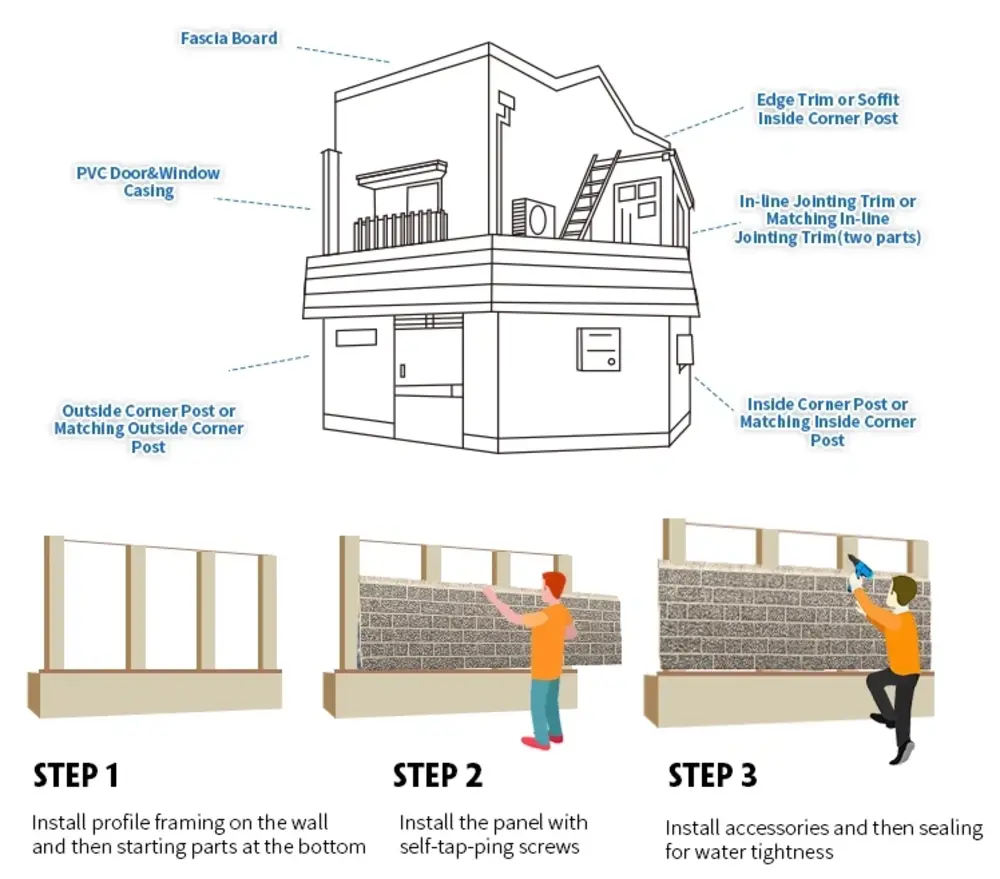PVC Foam Board has become an increasingly popular material for wall cladding in residential, commercial, and industrial buildings. Known for its lightweight, moisture resistance, and smooth finish, it offers a practical and aesthetic solution for modern interiors and exteriors. Whether you’re a contractor or a home improvement enthusiast, proper installation is key to achieving a professional finish. This guide walks you through everything you need to know about installing PVC Foam Board for wall cladding.
Why Choose PVC Foam Board for Wall Cladding?
PVC Foam Board is a versatile building material widely used for wall cladding due to several advantages:
Lightweight and Easy to Handle: Makes installation simpler and faster.
Moisture and Chemical Resistant: Ideal for wet areas like bathrooms and kitchens.
Durability: Resistant to impact, termites, and UV rays when used in the right applications.
Smooth Surface: Allows for easy painting, laminating, or printing.
Cost-Effective: Offers a balance between affordability and functionality.
These features make it suitable for homes, offices, retail stores, and industrial buildings looking for both aesthetics and performance.
Tools and Materials Needed
Before starting your PVC Foam Board wall cladding project, gather the necessary tools and materials:
– PVC Foam Boards (pre-cut to size or ready for trimming)
– Measuring tape and level
– Pencil or marker for marking
– Circular saw or fine-toothed handsaw
– Drill and countersink bit
– PVC-compatible adhesive (optional for extra strength)
– Screws or nails (stainless steel recommended)
– Sealant or caulk (for waterproofing)
– Safety gear: gloves, goggles, dust mask
Step-by-Step Installation Guide
1. Surface Preparation
Make sure the wall surface is clean, dry, and even. Remove dust, dirt, or any loose materials that might affect adhesion or alignment. If necessary, apply a primer coat to improve the bonding surface, especially for porous walls.
2. Measure and Cut the PVC Foam Boards
Measure the wall area accurately and mark the cutting lines on the PVC boards. Use a circular saw or fine-toothed handsaw to cut the boards cleanly. Double-check measurements to avoid waste or misalignment. Remember to leave a small expansion gap (about 2-3mm) between panels for thermal movement.
3. Dry Fitting and Alignment Check
Before final installation, dry-fit the boards to ensure proper alignment and fit. Use a level to maintain straight horizontal or vertical lines, depending on your design. Adjust as needed to avoid gaps or crooked lines.
4. Adhesive Application (Optional)
For additional strength and better adhesion, apply PVC-compatible adhesive on the back of the boards. Press the board firmly against the wall and hold it for a few seconds to secure the bond. Adhesive use is especially helpful on surfaces where mechanical fastening is challenging.
5. Mechanical Fastening
Secure the boards using stainless steel screws or nails to prevent rusting. Drill pilot holes and countersink the screws slightly below the surface for a neat finish. Space the fasteners evenly (approximately every 300mm) to prevent warping or sagging over time.
6. Sealing the Joints
Seal the joints and corners using a waterproof sealant or caulk. This step is crucial in wet areas to prevent moisture ingress behind the panels. Smooth the sealant using a finishing tool or your finger for a professional appearance.
7. Finishing Touches
Inspect the installation for any gaps, uneven edges, or exposed fasteners. Sand lightly if necessary. Depending on the design, you may paint the boards with PVC-compatible paint or install trim profiles to enhance the appearance.
Maintenance Tips for Longevity
PVC Foam Board wall cladding is low maintenance, but regular care ensures it stays looking its best:
– Wipe down with a damp cloth to remove dust and dirt.
– Refrain from using abrasive cleaners that may damage the surface.
– Inspect sealants periodically, especially in wet areas, and reapply if needed.
Final Thoughts
Installing PVC Foam Board for wall cladding is a practical way to enhance your building’s aesthetics while providing durable, moisture-resistant protection. By following this complete installation guide, you can achieve a professional finish that stands the test of time. Whether for home renovation or commercial spaces, pvc board surabaya offers versatility, ease of installation, and long-lasting performance, making it a smart choice for modern wall cladding applications.

